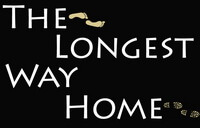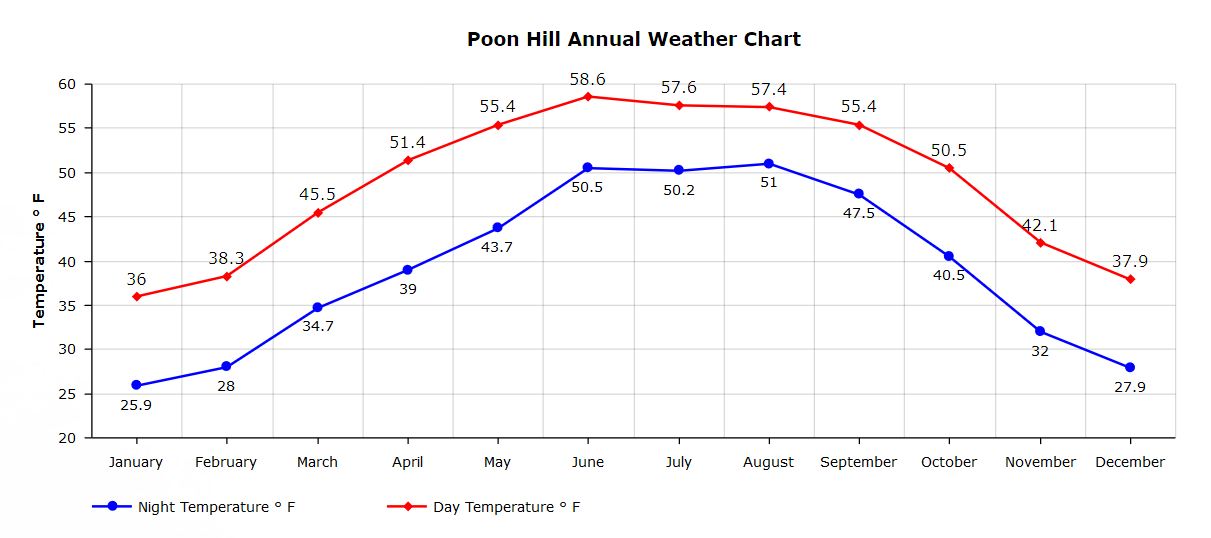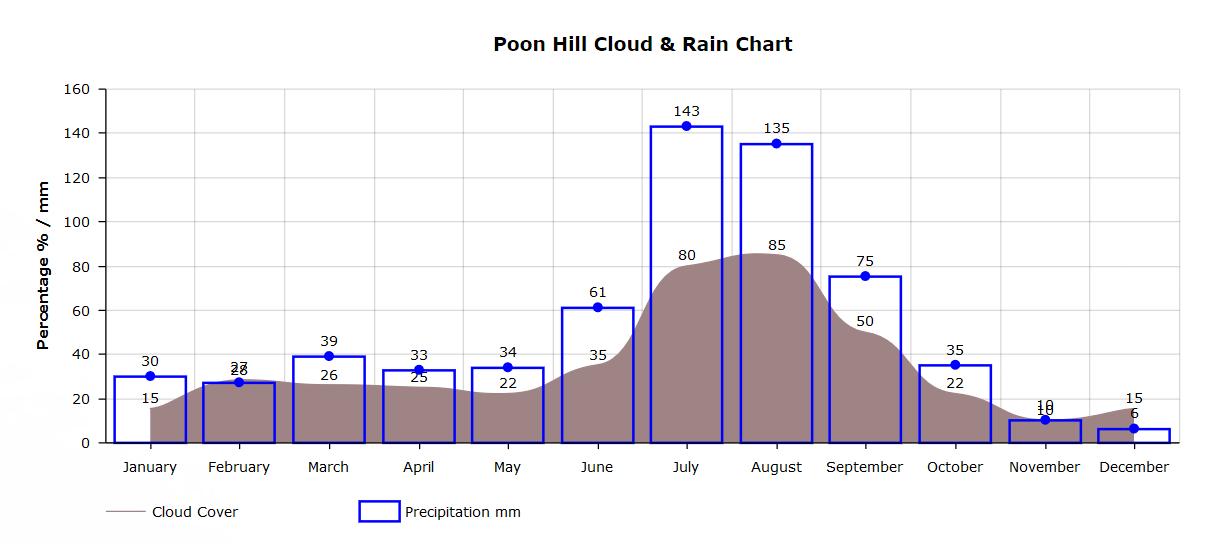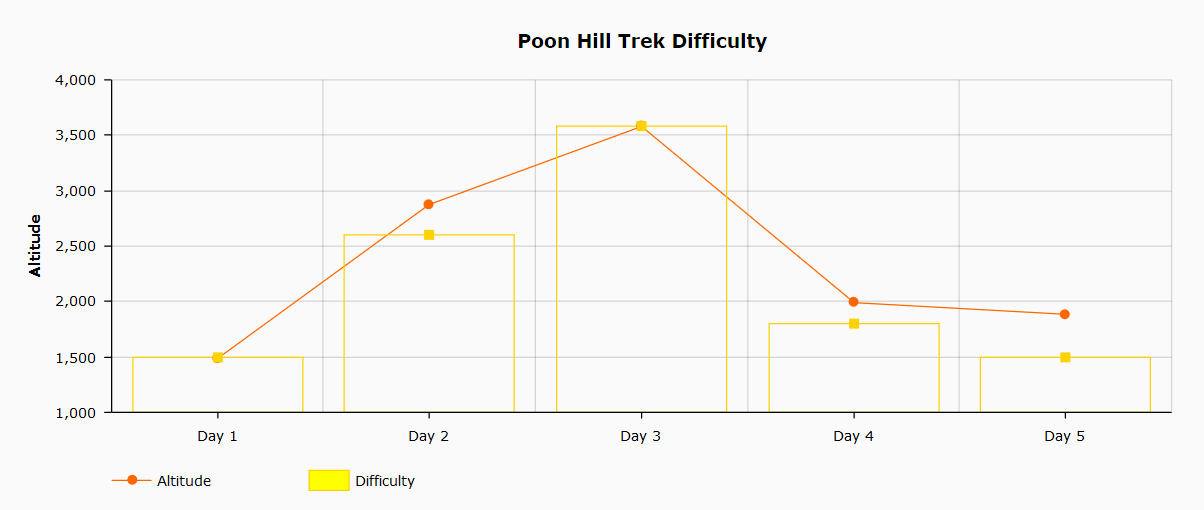About the Poon Hill Trek
The Poon Hill trek is one of Nepal's most popular classic short treks often referred to by its full name the "Ghorepani Poon Hill trek". It's called this as Ghorepani is the trekking village just beside Poon Hill where you stay the night before going up the hill in the morning for a sunrise view of the mountains.
The Poon Hill trek trek can be completed between 3-5 days depending on your requirements. It's a low-altitude trek with a maximum altitude of 3,210 m (10,531.5 feet) at the top of Poon Hill. However, Ghorepani has an altitude of only 2,874 m (9,429 ft) which is where you'll be sleeping so there's little change of altitude sickness on this trek. Ghorepani itself is a large water source for livestock. Historically it's name comes from "Ghore" horses, and "Pani" water. A place where horses were once watered.

Mountain views from Ghorepani are often overshadowed by Poon Hill but sometimes it's better to sit back and enjoy them from here!
Do be careful when researching your Poon Hill trek as there have been changes in 2019. Every trek on this website is kept up to-date and in my guidebooks, however other sites are may not be so accurate anymore.
The maps on this page are not to be used as physical trekking maps - they are here only to show the rough outline and region of a trek. More detailed maps, recommending trekking agents, where to buy trekking equipment in Nepal and a far more detailed trekking guide to Poon Hill are available in my trekking in Nepal guidebook.
Trek Overview
Difficulty: Easy |
Days: 3-5 |
Max Altitude: 3,210 m |
Distance: 55 km (34.10 mi) |
Accommodation: Lodge / Hotel |
Where is the Poon Hill trek?
Poon Hill is located to the north-east of Pokhara in the north central area of Nepal bordering the districts of Myagdi District and Kaski District. The hill itself is beside the village of Ghorepani in Dhaulagiri. It takes about 3-4 days to reach Poon Hill from Pokhara though many guides will extend this to 6-8 days for some extra sightseeing in the area.
Do note that because this is a popular trek many trekking agents will have slightly different stops along the it. If you are coming from Pokhara the route is basically the same. There are however several different routes to Poon Hill depending on if you are already on different treks in the Annapurna National Park.
It's best to ignore trekking companies trying to sell "homestays" or the like around Poon Hill. They are simply buzz-words for tea houses (trekking lodges) that have been there for decades - they just rebranded a few and put the price up. The area has very good accommodation compared to other treks.

Buses or jeeps will take you to the trail heads where you’ll start your trek on either rough paved roads or off roads before quickly moving into farmlands surrounded by forests. From here you ascend up into pristine forested areas surrounded on all sides by either valleys or trees.
If you are looking for “rural” Nepal then this trek may not suit your needs as it’s well discovered and one of the most popular in all Nepal. The nearby treks of Khopra Danda and Mohare Danda offer more rural community style treks. While the lesser known Muldai Trek offers the same views as Poon Hill but with fewer tourists and basic tea houses like they were 20 or so years ago at Poon Hill. Muldai is also a slightly shorter trek. For the Poon Hill Trek there are many tourist like facilities en route which can suit some people (better food, nicer for small children etc). For those looking to get away from all this a good guide will help you avoid the huge crowds during peak season.
If you've never been trekking before, have limited time, have small children or are looking for a relaxing trek Poon Hill can be ideal. Villages, farmlands, rhododendron forests and some great mountain views all make Poon Hill an ideal choice for a short time frame. For those on extended treks in the Annapurna region Poon Hill can be a great place to rest up or cross over into a new trek surrounded by the Annapurna mountains.
Map of the Poon Hill Trek
This map shows you the most popular Poon Hill trekking route.
Please note this map should not be used as a practical trekking map. While the main Poon Hill route leads to Ghorepani and remains the same there are variations depending on side trails, weather conditions, time of year, natural events and physical changes to the trek paths. Detailed trekking maps can be obtained in Nepal at very low costs and in my own trekking in Nepal guidebook.
The above map is a sample from my Nepal guidebook and Trekking in Nepal Guidebook - the only guidebooks with trekking maps that can be zoomed right into - even for the smallest of trails!
Facts about the Poon Hill Trek
The Ghorepani Poon Hill Trek is very popular and there is a bevy of information about it. However, some trekking agencies tend to "over" exaggerate aspects of it. There's also a multitude of "positive" "paid" blog posts about it out there. Let's keep an honest head here and explore what you can really expect.
Highest point of the Poon Hill trek
At 3,210 m (10,531.5 feet) the top of Poon Hill itself marks the highest point of the Poon Hill Trek. There's a viewing tower at the top of the hill if you want another 20 or so feet. This is where you go after a night in Ghorepani for a sunrise view of the mountains.

Viewing tower at the top of Poon Hill
Highest sleeping point on the Poon Hill trek
The highest sleeping point along the Poon Hill trek is at Ghorepani which is 2,874 meters (9,429 feet). The lowest point of the trek is Low camp is 1,488 meters (4,881.89 feet). The morning views from Ghorepani are also very nice. A mix of traditional tea houses to the front and the majestic snow capped mountains to the rear.
Total distance of the Poon Hill trek
The full distance trekked on the Poon Hill trek is about 55 km (34.10 miles). Though side treks and extra days can add or subtract from the distance. In terms of hours most people trek for over 35 hours in total - again however do note that distance and time on this trek is relative to your own stopping points etc. The above are averages.
How long have people been trekking the Ghorepani Poon Hill route?

This entire area was once part of the Pokhara to Tibet trading route. It wasn't a large route and many traders in the 17th century settled in the area to become farmers.
Poon Hill itself is just that - a large hill with 360 degree panoramas of the Annapurna Mountains.
Ghorepani's history lies in being a popular fresh water source for livestock, farming and people. In particular horse traders. The name Ghore means horse while Pani means water. Hence the village got it's name.
Is there any wildlife to see on the Poon Hill trek?
Bird and butterfly watching is very popular on the Poon Hill route. White capped river chats and colorful song birds are plentiful. Rhododendrons when in bloom bring out the butterflies.
Large animals like Yaks and leopards are not in this area. Locals still tell tales about tigers but nobody has actually seen one in many a decade. Donkeys and mules ply the trekking route transporting food and produce to the tea houses. Do watch your step when they are passing and give them full right of way. The little bells around their necks will warn you when they are approaching. Buffalo graze in fields, live in villages. and are often on the trekking trails.
All in all, colorful birds are probably going to be the most interesting wildlife you'll come across. Bring a good zoom lens if you are into photography.
What mountains can you see from Poon Hill?
Both the Annapurna mountain range and the Dhaulagiri mountain range are visible from Poon Hill. The view at sunrise is quite breathtaking compared to other short treks. Views include Annapurna I 8,138 meters (26, 700 ft), Annapurna South 7,218 meters (23, 684 ft) along with the world's seventh highest mountain Dhaulagiri 8,167 meters (26,794 feet).
For those who don't want to go up the hill, the view from Ghorepani is also very nice. Offering a mix of village buildings and lavish mountains.
Highlights of the Poon Hill Trek
Highlights of the Poon Hill trek include:

- A relatively easy trek to see the Himalayan mountains
- Short trek of only 3-5 days
- Good accommodation options
- Diverse menus
- Village Trails
- Friendly locals
- Location intersects with other treks
How to arrange a trek to Poon Hill
Arranging a regular Poon Hill trek
Due to the longevity and popularity of the Poon hill trek it is a very easy trek to arrange. Booking online can be significantly more expensive than booking in person when in Nepal. However, online tours to Poon Hill are readily available with little complication.
Package treks & tours bought online
Package treks & tours to Poon Hill bought online have a fixed itinerary usually for 5 days or more. Though the trek can be done in 3-4 days agencies will frequently try to upsell a 5th additional day. 4 days is about right while 3 is rushing it a bit. If you are fit and have trekked before you will probably find this fifth day unnecessary.
If you have not trekked before, have a need to go slow, are with small children or simply want to relax a bit more then the fifth day makes for a good choice.
Package tours usually include food, porters, accommodation and permits. Costs can be from USD $450-800+
Pro's of a package tour to Poon Hill include that everything is done for you ahead of time. There's very little organizing involved with little scope for anything going amiss.
Con's include paying above the average price, you won't know who your guide will be. Some large trekking agencies may also try to bundle you with other trekkers. Many online packages include transport from Kathmandu to Pokhara which is largely unnecessary.
Package treks bought in Nepal
For those with a couple of days in Nepal then you can arrange a package trek along the Ghorepani Poon Hill route yourself. Again, the main issue usually surrounds either completing the trek in four days or five days. Do remember to consider your days transport to Pokhara which many trekking agencies assume you know about. This does not include the trekking days but sometimes they will try to upsell this with a complementary bus ticket. It's not a big deal, just remember to count all your days.

If purchasing a local companies package tour it's important to know what's included.
Do make sure that both you and the trekking company are on the same page with what's included in the total price. Accommodation, permits, bus fees, meals etc. There are no flights involved with the Poon Hill trek unless you are coming from Kathmandu to Pokhara (where the trek starts).
Poon Hill is one of the few treks that can offer a range of accommodation. Package tours to Poon Hill will largely vary in price due to this. High priced Poon Hill treks may well include private bathrooms. Do ask. If you are okay with shared bathrooms then the price will be lower.
Pro's of a local package trek tour include meeting your guide before your trek, having the ability to ask questions in person and local package treks to Poon Hill are much cheaper than online.
Con's include having to spend at least one day listening to trekking agents trying to sell you the trek.
Hiring a local Poon Hill Guide yourself
There are many local guides that can take you to Poon Hill. It's a great way to help the local economy while also have a degree of trekking Independence. It basically means hiring an independent guide whom you just pay a daily rate to. You then pay for all the accommodation and food yourself. While the costs do come down you'll need to do more.
You'll need to deal with tea house and hotel owners yourself in terms of pricing and payment. It's quite easy to do this on the Poon Hill trek though because its popular hotel owners inflate prices during the peak season. So, you'll need to do some walking around if you are on a budget.
Pro's here include a cheaper trek with more trekking independence. You can stay when and where you like.
Con's include having to bargain for your own room in an area well used to tourists. You'll also have to order your own food, which is not hard. However, do remember that you need to eat wherever you stay. This is a trekking rule in Nepal. The best place to hire a guide for Poon Hill is in Pokhara as most are from that area and know it well - more below.
Independently trekking to Poon Hill yourself:
It is no longer permitted to trek Poon Hill alone. In March 2023 Nepal Tourism Board banned independent trekking in Nepal. All trekkers must hire a guide for this trek.
If you are looking for a guide for the Poon Hill trek I recommend you read my article on How to find a trekking guide in Nepal.
You may also contact me if you wish to have my personal recommendation however it would be appreciated if you first purchase one of my extremely detailed guidebooks to Nepal (they also list reviewed trekking agents for all budgets).
Best time of year to go trekking to Ghorepani Poon Hill
Nepal's traditional peak seasons offer the best months for great views from both Poon Hill and Ghorepani. However, due to Poon Hills low altitude it means that the winter season also makes this trek relatively accessible. It's important to realize that just because Poon hill is an easy trek doesn't mean that you'll be guaranteed a great view. During the peak season there's simply a greater likelihood of a great view.
Poon Hill Weather by month
| Avg. Temperature (°C) | Avg. Temperature (°F) | Precipitation / Rainfall (mm) | |
|---|---|---|---|
| January | 2.2 | 36.0 | 30 |
| February | 3.5 | 38.3 | 27 |
| March | 7.5 | 45.5 | 39 |
| April | 10.8 | 51.4 | 33 |
| May | 13 | 55.4 | 34 |
| June | 14.8 | 58.6 | 61 |
| July | 14.2 | 57.6 | 143 |
| August | 14.1 | 57.4 | 135 |
| September | 13 | 55.4 | 74 |
| October | 10.3 | 50.5 | 35 |
| November | 5.6 | 42.1 | 6 |
| December | 3.3 | 37.9 | 10 |
Do note that at Poon Hill does get cool at night, particularly in the winter months.
In recent years there has been more cloud coverage from April onwards to September in the region.
Temperature Chart for Poon Hill
Cloud and Rain Chart for Poon Hill
As with all low-mid altitude treks cloud coverage is an important aspect to take note of when planning a trek. Poon Hill's cloudiest months are July and August. For viewing mountains clean weather is best however having a some fluffy clouds highlights them further.
Months with the best weather to trek Poon Hill
Mid Sept-October - November/(early)December: Nepal's peak and best time to go trekking to Poon hill.
February-March-April: this is the end of the dry season in Nepal and the second best time of year to go trekking to Poon Hill. This time of year also has the added advantage of the surrounding countryside in full bloom..
December to January/February: the skies are clear but it can get very cold. It's rare for Poon Hill to close though and asides from being cold is still a good time of year to go.
May - June: The hot pre-monsoon season means things get uncomfortable and humid.. The valley around Poon Hill are starting to bloom with flowers though. It's probably best to go with a guide at this time of year to help you during down pours etc..
June - Mid September: this is Nepal's Monsoon season and the least popular time to go trekking to Poon Hill. The risk of leeches and heavy rain increases greatly. The views are nearly always obstructed too.
For more details please see my guide on the best time of year to go trekking in Nepal
What permits do I need to go on the Poon Hill trek?
If you are on a package trek or tour to Poon Hill then your guide or trekking agency will and should take care of all your permits for you. For independent trekkers you'll need to do it yourself. In all cases here's what permits you need and how to get them for the Poon Hill trek.
You need two permits for the Poon Hill Trek plus an entrance ticket
- Annapurna Conservation Area Project Permit (ACAP)
- Trekker Information Management System (TIMS Card)
- Poon Hill Entrance Ticket
The Annapurna Conservation Area Project Permit (ACAP) can be bought in either Pokhara or Kathmandu at the Tourist Information Center. However it's probably better to visit the Pokhara office as it's in the same region and quieter. Both offices are open between 10am - 5pm however it is better to arrive an hour or so before closing time. In Pokhara getting the permits only takes about 30 minutes if you have everything you need. TIMS cards can only be bought from a registered trekking agent.
Get the Annapurna Conservation Area Project Permit (ACAP)
An Annapurna Conservation Area (ACAP) covers all of the Annapurna National Park.
- Fill out the ACAP form
- Hand over the completed form, your passport and 2 passport photos
- Pay the 3,000 rupees (only payable in Nepali Rupees)
- Get your ACAP permit
Get the Trekker Information Management System Card (TIMS)
The Trekkers Information Management System Card (TIMS) is meant help protect trekkers through registration checkpoints along a trek including Poon Hill. The fees also go towards guide and porter insurance.
* Do note that the TIMS Card is now a flat 2,000 rupees and a trekking company is the only one that can apply for it.

Both the ACAP and TIMS card can be used for all applicable treks until they receive an exit stamp. Once either permit have an exit stamp they cannot be used again. Do be careful about this if combining Poon Hill with another trek. If you get exit stamps and try to enter/leave again there is a hefty 6,000 rupee on the spot fine!
Poon Hill Entrance Ticket
The final permit you'll need is the Poon Hill Entrance Ticket. This is available on the steps leading up to Poon Hill by the large gate from Ghorepani and also from a small counter at the top. Both counters are open from 5am to 8am.
Getting a ticket is easy.

- Pay 100 rupees
- Get a ticket
If the ticket counters are closed when you get there then you can proceed on without a ticket. They are only open in the morning for sunrise visitors. You may well be asked to show you ticket by random people. Always ask for their ID.
The 100 rupees is local initiative to help maintain the Poon Hill area including the viewing towers, the steps leading to it and cleaning litter. Considering ACAP did not maintain the old route and steps this initiative was needed and seems to be working. Do note hot drinks for prepacked meals are not allowed on the top of Poon Hill and there is a hefty fine. There is a local tea shop serving coffee, tea and snacks at dawn.
Where are permits checked?
The first village after Nayapul called Birethanti is where the first "check point" is to the left on the road in a large shed. However this is not an official check point it's a local community center which as you to sign a visitors books - they then promptly as you for a donation. Neither is mandatory though it's seen as goodwill to sign the visitors book. Many suspect that in the future the local community may require a ticket to enter the area. For now, it's just a check point.

Across the bridge in Birethanti is the first TIMS card check point where you need to show your TIMS card, get it stamped and write your name down in a visitors book.
A little further on is the first ACAP check point where again you sign a visitors book and they punch a hole in the permit.
The next checkpoints won't be until you reach Ghorepani where the same procedure takes place again.
If you are with a guide they can do all the permit checks for you.
What Equipment do I need to go on the Poon Hill trek?
No specialized equipment is needed for the Poon hill trek. The rest will depend on the time of year in regards to clothing and equipment. The following are usually necessities:

- A pair of boots or shoes suitable for off-road walking
- A wind cheater style jacket
- Long sleeve shirts
- Trekking pants
- Shorts
- Socks
- Rubber sandals
- Water bottles
- Water purification system)
- Map
- Sunglasses
- Sunblock
Regular bottled water is not easily available on the Poon Hill trek due to an NGO and the local community banning plastic bottles. Unfortunately the side effect of this is the local filter are not well maintained. It's better to bring your own water filtration system and boil the water. A pair of good quality heat resistant water bottles are essential. The use of a Steripen or Lifestraw (does not protect from fecal matter) is also useful though do note they do not remove viruses and all bacteria.
Please note the above is a very basic list. For a full comprehensive list please see my article on trekking equipment you need for Nepal
How difficult is the Poon Hill trek?
Download my guidebook and get the full details of this trek
Get this trek, plus 29 others in a premium guidebook for only $19.99
Also available in paperback

Poon Hill known as an easy to moderate trek. However this will be relative to your own lifestyle and fitness levels. In general the vast majority of people complete the Poon Hill trek. However do note there is plenty of accents and steps to climb.
Day one on the Poon Hill five day trek is relatively easy with undulating tracks and trails. If you are on a four day trek to Poon Hill then do note you may well go all the way to Ulleri which is quite steep and taxing.
Day two is tougher with a steep trek up through to Ulleri and then 8km to Ghorepani over a gentle incline.
Day three involves a pre dawn trek up to Poon Hill over many steps. The trek to Tadapani is tiring for many who often opt to stay here for the night. Three/Four day trekkers will continue on to Ghandruk.
Day Four from Tadapani to Ghandruk is decidedly easier than the previous days.
Day Five from Ghandruk to Nayapul is once again an easy decent.

Trekkers climbing up the trail to Ghorepani and on to Poon Hill
The hardest part for many people not used to trekking are the early mornings. However Poon Hill trek views are best at dawn. Nepali trekking guides make it a point to get people up early for this. Breakfast on the Poon Hill day is usually after you climb up Poon Hill just before dawn. There is a tea shop at the top of Poon Hill serving hot tea, coffee and snacks. Do note bringing your own hot drinks is not allowed and there is a 2,000 rupee fine if you do!
Along village areas and in between many of them are stone paving slabs. There are also areas with stone steps. Surprisingly many people find these can be difficult on the knees. However, there is plenty of time so going slowly helps tremendously.
The stone steps and some grassy areas on the trek can get slippy if it rains.
Poon Hill has a reputation as being one of the best short treks in Nepal for good reason. Many people with a range of fitness levels, age and ability enjoy the Poon Hill trek. During the peak seasons there is no harsh weather to consider. Even during the off-season seasons the trek is relatively easy to do. The exception being monsoon season due to heavy downpours.
How fit do I need to be to go on the Poon Hill trek?
Fitness for Poon Hill like any other trek is relative to your fitness levels. It's not considered a "strenuous" trek. This is particularly true if you do it over five days.
As always I would advise anyone going trekking to see a doctor before they go for a check-up and to talk about dealing with altitude sickness.
If you are doing the trek over four days then things pick up in pace a bit, particularly on the third day. For those doing the trek in 4 days there is at least one day of 8 hours trekking. Generally speaking there are about 4-6 hours of light trekking every day.
If you do the trek over three days then it is most certainly tiring with days of up to 10 hours of trekking.
In all cases a certain level of fitness is required. Guides break the treks up into early mornings of 3-4 hours and after lunch of 3-4 hours. Surprising many is the fact that a lot of the trek has stone paving between villages and many steps.
While Poon Hill is not particularly high in Altitude if coming from sea level or below you may feel some strain. As a precaution do read about altitude sickness in Nepal.
What's the food like on the Poon Hill trek?
Due its popularity tea houses on the Poon Hill Trek have adapted well to tourists menus. While most places offer typical Nepali trekking food you can also get chicken sizzlers, fresh fish and even steaks. Vegetarian options are also plentiful. Once you reach Ghorepani many of the hotels and teahouses will have good menus with plenty of options.

This is a plate of typical Dal Bhat on the Poon Hill trek - rice, potatoes, curry, fresh vegetables (spinach) and soup
Most of the food is locally sourced or brought up form Pokhara. As with all trekking routes in Nepal Dal Bhat is the staple. For those wanting variety pasta, pancakes, chow mien, momos and chop suey is also readily available. It won't be up to the same standard as Kathmandu or Pokhara restaurants but it's still good.
Typical Poon Hill Menu
| Item | Price |
|---|---|
| Porridge with milk | 300-350 Rupees |
| Fried eggs (2) | 250-300 Rupees |
| Cheese Omelet | 400-450 Rupees |
| Vegtable Momo | 350-400 Rupees |
| Dal Bhat (Meat) | 500-1000 Rupees |
| Dal Bhat (Veg) | 400-600 Rupees |
| Boiled Potatoes | 300-350 Rupees |
| Fried Noodles (Veg) | 300-400 Rupees |
| Fried Potatoes with Cheese | 450-550 Rupees |
| Pasta with sauce | 400-560 Rupees |
| Tea/Coffee | 50/100 Rupees |
| 1 liter beer | 600+ Rupees |
| Soft Drinks (Coke, Sprite etc.) | 120-150 Rupees | 1 liter filtered water | 50-70 Ruppees |
| 1 liter boiled water (for filtering) | 50 Rupees | 1 liter bottled water (not available)* | 100-150 rupees |
Please note that bottled water in this part of the Annapurna Region was banned due to an NGO and local community efforts to reduce waste. Unfortunately the installed filters for local water are not maintained well while other plastic beverages are still sold. It's strongly advised you used a water filtration system. Filtered water costs between 50-70 rupees - it is not boilded.
Again, beer, soda, coffee, tea and hot lemon are also widely available.

This is a plate of fried momos on the Poon Hill trek
Chocolate, sweets, biscuits and candy bars are widely available via small stores in villages. Do check the best before dates and be sure to ask the price before agreeing to buy as prices fluctuate.
As with all treks the golden rule is that you must eat in the restaurants of the tea house you stay at when trekking in Nepal. In the past accommodation owners have added supplemental charges to anyone who eats elsewhere. Think of it like a trekking tradition to eat where you sleep.
What's accommodation like on the Ghorepani Poon Hill trek?
Accommodation along the Ghorepani Poon Hill trek is among the best on all trekking routes in Nepal. There's a range of typical shared bathroom tea houses along with comfortable hotels with private bathrooms, Wi-Fi and hot showers.

In recent years commercial hotels have begun opening up outlets under different names along this trekking route. You'll notice them by the large increase in price.
Similarly do be careful about accommodation being listed as "homestays" or "community homestays". Many of these are being run or pushed by commercial tour companies. Typical family run tea houses still exist on this route but they won't be the ones advertising online etc.
Finally if going with a guide do make sure to let them know what type of accommodation you expect to have before leaving on the trek. They will adjust the price beforehand for you.
Read more and see what trekking accommodation is like in Nepal.
List of hotels & teahouse telephone numbers on the Poon Hill Trek
| Tea House/Lodge Name | Telephone Number |
Location |
|---|---|---|
| Fishtail Lodge | +977-9745033038 | Birethanti |
| Hotel Sunrise | +977-9746027663 | Birethanti |
| Annapurna Guest House | +977-9746079495 | Hile |
| Green View | +977-9746030975 | Hile |
| Riverside Lodge | +977-61696448 | Tikhedunga |
| Tikhedunga Lodge | +977-9746019199 | Tikhedunga |
| Annapurna View Point | +977-9746034622 | Ulleri |
| Kamala Guest House | +977-9746032217 | Ulleri |
| Snow View | +977-9846659000 | Ghorepani |
| Barahi | +977-9846360488 | Ghorepani |
| Fishtail View | +977-9846318082 | Tadapani |
| Grand View Lodge | +977-9756000881 | Tadapani |
| Annapurna Guest House | +977-9848427448 | Ghandruk |
| Snowland | +977-846209264 | Ghandruk |
How much does the Ghorepani Poon Hill trek cost?
Costing for the Ghorepani Poon Hill trek is subject to many things.
You will need to pay for the following permits:
- An Annapurna Conservation Area Project (ACAP) permit which is 3,000 rupees.
- TIMS Card (Tourism Information Management System) which is USD $20 and only available from trekking agents.
Additional fees:
- Poon Hill Entry fee: 100 rupees
Working out your trekking budget:
Package tours bought overseas are the most expensive for those looking for a guide. Package tours for Poon Hill trek bought within Nepal are next most expensive. Going with just a guide is next. And finally going it alone is the cheapest (however, keep in mind that accommodation can go up in peak season).

Online package tours for five days can cost between to USD$500-600+ pp. Not including water. This does include a guide, accommodation, permits and meals. Personally speaking, I don't think these are good value.
Ignore packages offering 6 or more days.
In country package tours to Poon Hill for 5 days can cost $350-400. This includes a guide, permits, meals and accommodation.
Guide only services can cost from $27 to $50 per day. The more you pay, the more experience your guide should have.
Porter fees are roughly USD $20 per day.
Poon Hill does get very busy during peak seasons with both international and domestic trekkers. While there is ample accommodation then best hotels and teahouses tend to get booked out quickly at short notice. With a guide and package trekkers have the advantage of not worrying about this aspect.
If you are looking for a guide for the Poon Hill Trek then I recommend you read my article on how to find a trekking guide in Nepal. Alternative use my Find a Trekking Guide Service.
Average 5 day trek cost to Poon Hill
| Item | Cost USD $ |
| Permits (ACAP, TIMS, Poon Hill) | 41 |
| Guide x 5 days | 135 |
| Accommodation x 5 (private) | 25 |
| Meals 3x5 | 75 |
| Water 4 liters a day (filtered & boiled) | 14 |
| Transport (private-RTN) | 15 |
| Total | 305 |
Extras: Don't forget to include a tip for your guide 10%. Any soft drinks, sweets, hot drinks etc. you may want to purchase along the way.
- The cost of an average teahouse with shared bathroom is 300 rupees in the off season and 300 in peak for a shared bathroom. For a private bathroom they are about 800 rupees.
- There are some commercial hotels charging USD $20++ for rooms with views over the mountain range.
- Bottled water is not available. The cost of one liter of locally filtered water is 50-80 rupees (not boiled).
- The cost of a plate of Dal Bhat starts at around 450 rupees and climbs to 600+ rupees.
Travel insurance should be included and do make sure you are covered for trekking! Here is my recommendation for travel insurance when in Nepal.
Is the Ghorepani Poon Hill trek crowded?
This is a very popular question. Most people are looking for a quiet pristine rural trek in Nepal. Treks like Everest Base Camp and Poon Hill are popular routes and not the type of place you go to experience "alone time" unless you go in the off season.

Poon Hill at certain times of the year can be very crowded at sunrise. However, this is similar to "luck of the draw". Everyday during peak season there are people arriving. You may get lucky on a quiet day or you may arrive when everyone else does.
I've been on Poon Hill alone and also when there's a huge crowd and only days apart.
With no offense meant, large Indian, Chinese and Nepali groups tend to be the noisiest. While selfie stick holding instagramers tend to take the longest posing by popular spots. So if you are making your way up the hill and you do want some quiet time but see a lot of people around on the way up you may want to ask your guide to avoid the look out tower area.
My advice is if there is a large crowd there and in particular noisy groups just move away a little to a quieter area of the hill. Likewise you could wait them out. On a clear day the mountains are visible all day long!
Similarly unless you are particularly enamored by sunrises it may be much quieter after 8am.
Poon Hill is a great short trek with fantastic views. The accommodation and facilities are of a better standard here than on other short treks. So, there's a little give and take. Again, if there is a crowd on Poon Hill, just walk a little away from it. There's little difference in the view and you can still get a peaceful sunrise.
If you are looking for a non-touristy version of Poon Hill with the same views then the Mohare Danda trek maybe for you. If you are looking for a slightly more challenging trek which can also take in the Poon Hill trek then the Khopra Danda trek may suit.
The Ghorepani Poon Hill trekking routes
There is a fairly standard set route for the Poon Hill trek. However many trekking companies offer different stop overs. There's not a huge difference though Ghorepani and Poon Hill should certainly be on the itinerary.
Some alternative overnight stop-overs do happen depending on the time of year (bookings) and some trekking agencies preferred places to stay. Realistically, any changes are minimal as the route is basically the same.
If you are coming from other trekking routes like Mardi Himal or the Annapurna Circuit then you'll arrive at different points. As a single trek on it's own it starts and ends in Pokhara.

Poon Hill sign and mountains are one of the best landmarks in Nepal
A five day Ghorepani Poon Hill Trek route starts from Pokhara where you take a bus to the trail head at Nayapul. This is where your trek starts from. From Nayapul you trek to Tikhedunga / Hile passing streams and forest areas.
Day two has you reaching Ghorepani along the way you'll be on what's considered standard off road trekking trails which go up and down. These include nearly two hours of stone steps to climb via the village of Ulleri!
Day three will start very early with a pre-dawn trek up to Poon Hill itself at 3210 meters. You then either go back to Ghorepani for breakfast or on to Tadapani.
Day four is from Tadapani to Ghandruk which is filled with valleys, farm lands and mountain views.
Day five is Ghandruk back to Nayapul where you take a bus to Pokhara.
A second route adds in Australian camp but is largely unnecessary unless you want to extend your trek. This second route is good for extending the Poon Hill trek to Mardi Himal.
Doing the trek in four days: If you do the Poon hill in four days you need to spend longer days trekking and reach Ulleri on day one. Ghorepani on day two. Then on the third day reaching Ghandruk where you'll take a bus or jeep to Nayapul/Pokhara on the fourth day.
See the Poon Hill Itinerary below for more.
Here is a typical five day Ghorepani Poon Hill trek route itinerary:
| Day | Route | Distance (km) | Highest Altitude |
| 1 | Pokhara to Nayapul via taxi/jeep or bus then trek to Tikhedunga/Hile | 20 km (bus/trek) (1.5/4-5 hours avg) | 1,488 m |
| 2 | Tikhedunga/Hile to Ghorepani | 13 km (6/7 hours avg) | 2,875 m |
| 3 | Ghorepani to Poon Hill to Tadapani | 20 km (5/7+ hours avg) | 3,210 m |
| 4 | Tadapani to Ghandruk | 7 km (5 hours avg) | 1, 990 m |
| 5 | Ghandruk to Syauli to Nayapul then a jeep or bus to Pokhara* | 19/20 km (4/4 hours avg) | 1,885 m |
* Shortening the trek Some people on limited time shorten this trek by going straight to Nayapul on the 4th day. There are now buses and jeeps to Nayapul and jeeps to Pokhara which you can take instead of trekking.
Some trekking agents offer to trek the opposite way around Poon Hill. This is another popular 4 day trek.
Four day Ghorepani Poon Hill trek route itinerary:
| Day | Route | Distance (km) | Highest Altitude |
| 1 | Pokhara to Nayapul via taxi/jeep or bus then trek to Hile | 20 km (bus/trek) (1.5/4-5 hours avg) | 1,488 m |
| 2 | Hilli to Ghorepani | 13 km (6/7 hours avg) | 2,875 m |
| 3 | Ghorepani to Poon Hill to Ghandruk | 27 km (10+ hours avg) | 3,580 m |
| 4 | Ghandruk via jeep or bus to Nayapul/Pokhara | 19/20 km (4/4 hours avg) | 1, 990 m |
For 3 days and two nights then trekkers take a jeep or bus to Ghandruk then trek to Tadapani for the night. Then the next day trek to Ghorepani. On the third day they trek up to Poon Hill before trekking all the way to Hile where they can get a jeep to either Nayapul or Pokhara.
For more short treks here's a list of Treks in Nepal
More information on Trekking in Nepal
Ghorepani Poon Hill is just one of many treks in Nepal. It's an easy and popular trek offering forests, valleys along with tea houses surrounded by famous mountain views once you reach Ghorepani.
For alternative treks do read my list of treks in Nepal which is continually being added to based on popularity or request.
If looking for a trekking guide I recommend you read my article on How to find a trekking guide in Nepal or you can use the Find a Guide Service.Liked this page? You'll love my trekking books (which include this trek)! They are a hands on trekking guidebooks that arebetter than the rest. Yes, really!
The books contain day-by-day guides with accuracy using scalable maps, photographs and travel-tested up-to-date trekking information.
Just like my other guidebooks to Nepal they are interactive, printable or paperback guidebooks like no other.
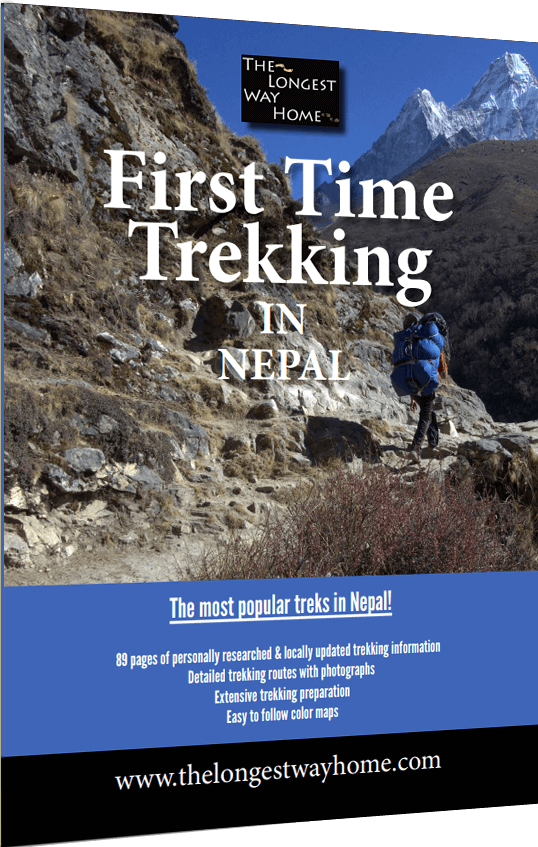 |
 |
First Time Trekking in Nepal
|
Trekking in Nepal
|
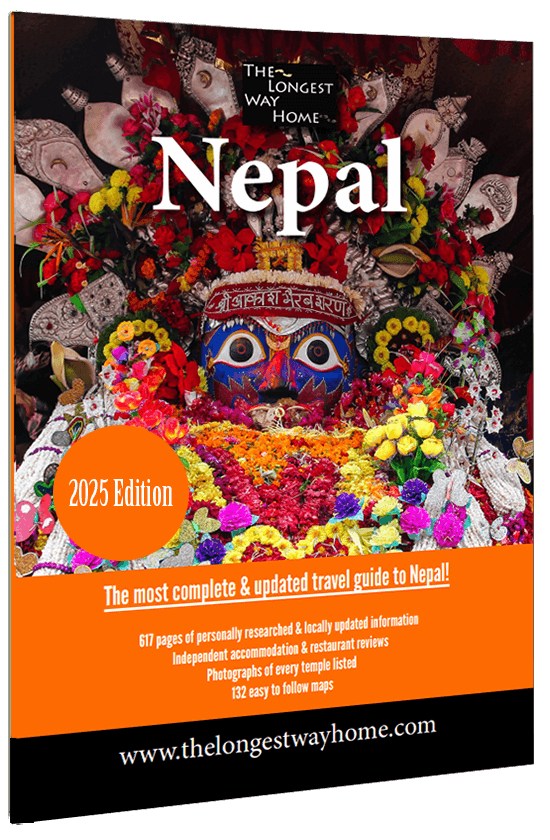 |
|
| Full Nepal Guidebook Complete country guide that also includes First Time Trekking in Nepal |
|
Was this page helpful to you? If so please tell others!

